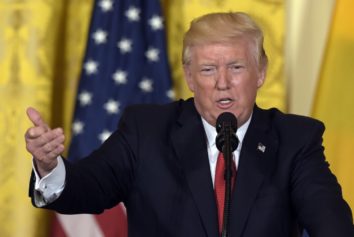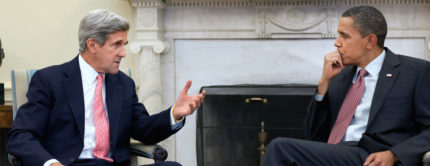First it was Crimea, now it’s Ukraine.
Just weeks after Russia used unrest in Crimea as an invitation to invade and annex the peninsula—drawing a loud outcry and sanctions from the U.S. and European Union—the same scenario is in danger of developing in Ukraine.
Reports indicate that Ukrainian authorities have had to send security forces to Kharkiv, Ukraine’s biggest city, to put down an apparent uprising by pro-Russian separatists in the eastern part of the country that shares a border with Russia and is most closely aligned with its mammoth neighbor.
Ukrainian Interior Minister Arsen Avakov called it an “anti-terrorist operation” on his Facebook page, as the subway system was closed and the downtown area sealed off.
Russia accused Ukraine of using 150 specialists from a U.S. private security company, Greystone — formerly known as the infamous Blackwater—to work with Ukrainian forces and that the crackdown risked sparking a civil war. But the U.S. responded that it is Russia that is instigating unrest in the country’s eastern regions.
The U.S. is backing Ukraine’s contention that some of the pro-Russian separatists who seized administration buildings in the cities of Luhansk and Donetsk,were paid provocateurs brought in from outside, according to White House press secretary Jay Carney.
U.S. and European officials are afraid that Russia will use the civil unrest in Ukraine, along with economic and military pressure, as the commencement of the next phase of Putin’s effort to make Ukraine a loose federation allied with Russia.
In fact, Secretary of State John Kerry told Russian Foreign Minister Sergey V. Lavrov during a phone call yesterday that there would be “further costs” if Russia took additional steps to destabilize Ukraine, according to the U.S. State Department. Noting the pro-Russia protests in Donetsk, Kharkiv, Lugansk and Mariupol, the U.S. does not believe they were a “spontaneous set of events,” according to Jen Psaki, the State Department spokeswoman.
“He made clear that any further Russian effort to destabilize Ukraine will incur further costs for Russia,” Psaki said, without providing details.
She said officials from the United States, Russia, Ukraine and the European Union are planning to meet in the next 10 days to discuss the situation in Ukraine.
The actions by demonstrators in Ukraine were similar to the actions of pro-Russian protesters who seized Crimea’s assembly and paved the way for Russia to annex the peninsula. After several hundred pro-Russian demonstrators in Donetsk declared yesterday that they were forming an independent republic, they urged Putin to send troops to the region as a peacekeeping force—though there was no imminent threat to peace.
After Ukrainian President Viktor Yaukovych, who was strongly backed by Russia, was ousted, Putin said he has the right to defend Russian speakers from “fascists.”
Analysts believe Russia’s ultimate goal is to destabilize the weak government in Kiev, which would prevent it from becoming more closely aligned with the West and thus give Moscow greater leverage over the country’s future with the approach of a new presidential election next month.
With the unrest in the east, the Ukrainian government is challenged to begin putting in place the austerity measures and financial overhauls that were called for by the International Monetary Fund as a precondition for the $18 billion loan package that the country desperately needs to avert a default on its debt.


